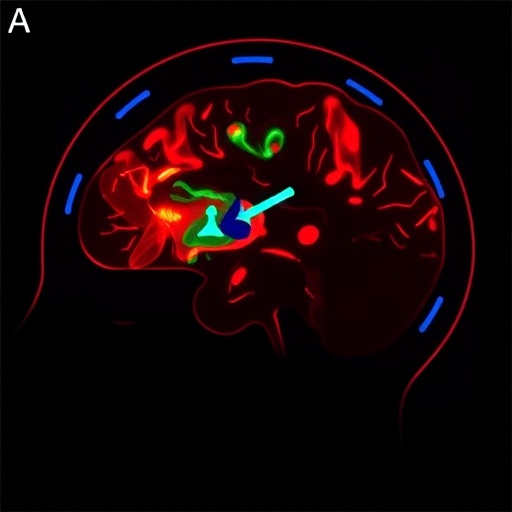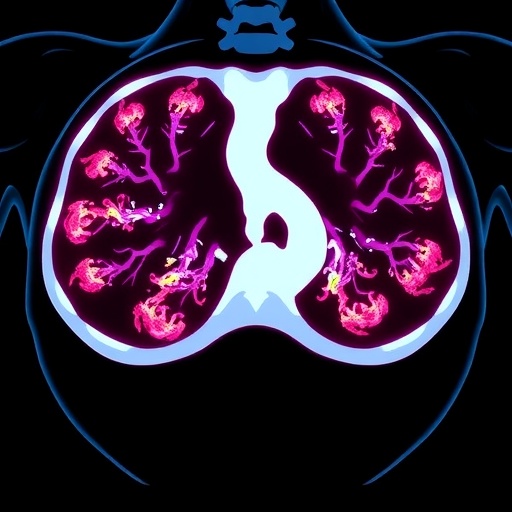
Malignant pleural effusion (MPE) continues to challenge oncologists worldwide due to its association with poor patient prognosis and debilitating symptoms. Recent advancements in cancer therapeutics have focused on both mitigating symptomatic burdens and controlling tumor progression within the pleural cavity. A groundbreaking new study published in BMC Cancer has demonstrated promising results with a novel combination therapy involving intrapleural administration of nanoparticle albumin-bound paclitaxel (nab-Paclitaxel) and an anti-vascular endothelial growth factor (VEGF) agent in a murine model of malignant pleural effusion. This investigation paves the way for enhanced therapeutic strategies that could prolong survival and reduce tumor burden in MPE patients.
Malignant pleural effusion is essentially the pathological accumulation of fluid in the pleural space caused by cancer metastasis, most commonly originating from lung carcinoma. The condition frequently results in respiratory distress and significantly contributes to morbidity and mortality in affected individuals. Current therapeutic interventions often revolve around symptomatic relief through drainage and systemic chemotherapy, but these approaches fail to effectively control tumor progression or fluid accumulation within the pleural cavity. Hence, this research addresses a critical gap by evaluating targeted intrapleural therapy designed to simultaneously combat tumor proliferation and angiogenesis.
The study utilized a well-established murine model of malignant pleural effusion induced by intrapleural injection of Lewis Lung Carcinoma (LLC) cells. Over 300 mice were subjected to LLC cell implantation to recapitulate the human disease phenotype, including tumor implantation in the pleural lining and pleural fluid accumulation. This model is instrumental for preclinical evaluation of new intrapleural therapeutic agents due to its reproducibility and clinical relevance to human lung cancer-associated MPE.
.adsslot_ZBiASvzTGm{width:728px !important;height:90px !important;}
@media(max-width:1199px){ .adsslot_ZBiASvzTGm{width:468px !important;height:60px !important;}
}
@media(max-width:767px){ .adsslot_ZBiASvzTGm{width:320px !important;height:50px !important;}
}
ADVERTISEMENT
Upon establishing the malignant effusion, the mice were stratified into five distinct groups receiving intrapleural treatments. These groups included administration of conventional Paclitaxel, nanoparticle albumin-bound Paclitaxel (nab-Paclitaxel), anti-VEGF antibody therapy, a combination of nab-Paclitaxel with anti-VEGF, and a control group treated with saline. The study meticulously monitored a subset of animals longitudinally, analyzing weight changes, mobility, survival outcomes, as well as biochemical and histological parameters within the pleural effusion and tissue microenvironment.
One key advantage of nab-Paclitaxel, as leveraged in this study, lies in its nanoparticle formulation, which enhances drug delivery and tumor penetration while simultaneously reducing systemic toxicity. The albumin-bound nanoparticles facilitate efficient transcytosis via endothelial cells, promoting drug accumulation within the pleural tumor nodules. Combining this enhanced cytotoxic drug delivery system with anti-angiogenic therapy theoretically halts tumor vascularization – a critical mechanism driving tumor sustenance and pleural fluid formation.
The results revealed a stark contrast between the treatment groups when analyzing survival, tumor burden, and pleural fluid volume. Notably, the group receiving the combined nab-Paclitaxel and anti-VEGF treatment exhibited the longest median survival times, significantly outperforming both monotherapy and control groups. The combination therapy effectively suppressed tumor implantation scores within the pleura and markedly curtailed the accumulation of pleural fluid, demonstrating superiority over standard Paclitaxel treatment modalities.
The biochemical analysis of the pleural fluid reflected underlying inflammatory and tumor microenvironment dynamics. Markers such as lactate dehydrogenase (LDH), interleukin-6 (IL-6), VEGF, and tumor necrosis factor-alpha (TNF-α) were quantified and correlated with treatment efficacy. The combination therapy group consistently showed reductions in these pro-inflammatory and pro-angiogenic mediators, suggesting a robust modulation of the pleural tumor microenvironment that impedes both tumor survival and inflammatory-driven fluid exudation.
Histological examinations further substantiated the therapeutic benefit of the intrapleural combination. Pleural tissues from treated animals showed decreased neovascularization, less dense tumor nodules, and reduced signs of pleural inflammation and fibrosis in the nab-Paclitaxel plus anti-VEGF group. This histopathological evidence aligns with the clinical metrics of reduced effusion volume and enhanced animal mobility, underscoring the potential translational relevance of this treatment approach.
The mechanistic rationale for integrating VEGF inhibition with chemotherapy aligns with the established role of VEGF as a central mediator of angiogenesis and vascular permeability, both of which are driving forces behind malignant effusions. Blocking VEGF signaling disrupts new blood vessel formation essential for tumor growth and reduces pleural fluid leakage by stabilizing vascular barriers. Meanwhile, nab-Paclitaxel delivers potent cytotoxic effects directly to neoplastic cells, facilitating combined suppression of the tumor niche.
This investigation also sheds light on potential clinical implications for human therapy. Current management of malignant pleural effusion is limited and often palliative, underscoring the urgent need for innovative localized treatments that not only reduce symptoms but also modify disease trajectory. The use of localized intrapleural delivery systems can minimize systemic side effects commonly observed with conventional chemotherapy, providing a more targeted and tolerable option for patients with advanced lung cancer and effusions.
Moreover, the success of nanoparticle-based drug delivery in this study could fuel broader adoption of nanomedicine in oncological pleural diseases. By tailoring the physicochemical properties of therapeutic agents, researchers can optimize drug retention time and penetration depth within pleural tumors, potentially revolutionizing treatment paradigms for diverse thoracic malignancies.
The study also highlights vital parameters for future research, including dosing schedules, long-term safety, and potential combinational regimens with immunotherapies. Evaluating how nab-Paclitaxel and anti-VEGF interface with the host immune response in the pleural space may unearth synergistic pathways that could amplify anticancer efficacy.
Furthermore, this report emphasizes the importance of rigorous murine models that closely mimic human pathology in preclinical drug development. The Lewis Lung Carcinoma intrapleural model successfully recapitulated key aspects of human MPE, validating its use as a platform for testing novel therapeutics and understanding molecular underpinnings of pleural metastasis.
While the findings are compelling, translation to clinical practice requires human trials to assess safety, optimal dosing, and effectiveness in diverse patient populations. Given the minimal invasiveness of intrapleural therapy, patient compliance and quality of life considerations are likely to be favorable compared to systemic cytotoxic regimens.
In conclusion, the research undertaken by Silva et al. represents a significant leap forward in malignant pleural effusion therapy. By combining intrapleural nanoparticle-enabled chemotherapy with targeted antiangiogenic treatment, the approach not only diminishes tumor burden but also improves survival outcomes in a robust experimental model. This dual modality strategy holds promise to redefine therapeutic landscapes and bring new hope for patients suffering from this devastating oncological condition.
Subject of Research: Malignant pleural effusion treatment using intrapleural nanoparticle albumin-bound paclitaxel combined with anti-vascular endothelial growth factor therapy in murine models.
Article Title: Effect of intrapleural anti-Vascular Endothelial Growth Factor (VEGF) associated with nab paclitaxel in a murine model of malignant pleural effusion.
Article References:
Silva, C.S.R., Teixeira, L.R., Pereira, K.R. et al. Effect of intrapleural anti-Vascular Endothelial Growth Factor (VEGF) associated with nab paclitaxel in a murine model of malignant pleural effusion. BMC Cancer 25, 1261 (2025). https://doi.org/10.1186/s12885-025-14622-x
Image Credits: Scienmag.com
DOI: https://doi.org/10.1186/s12885-025-14622-x
Tags: angiogenesis in cancer treatmentanti-VEGF combination therapycancer treatment advancementsintrapleural therapy for malignant pleural effusionmalignant pleural effusion managementmurine model for cancer researchnab-paclitaxel efficacy enhancementnanoparticle albumin-bound paclitaxelprognosis improvement in cancer patientssymptomatic relief for pleural effusiontherapeutic strategies for pleural effusiontumor progression control strategies






